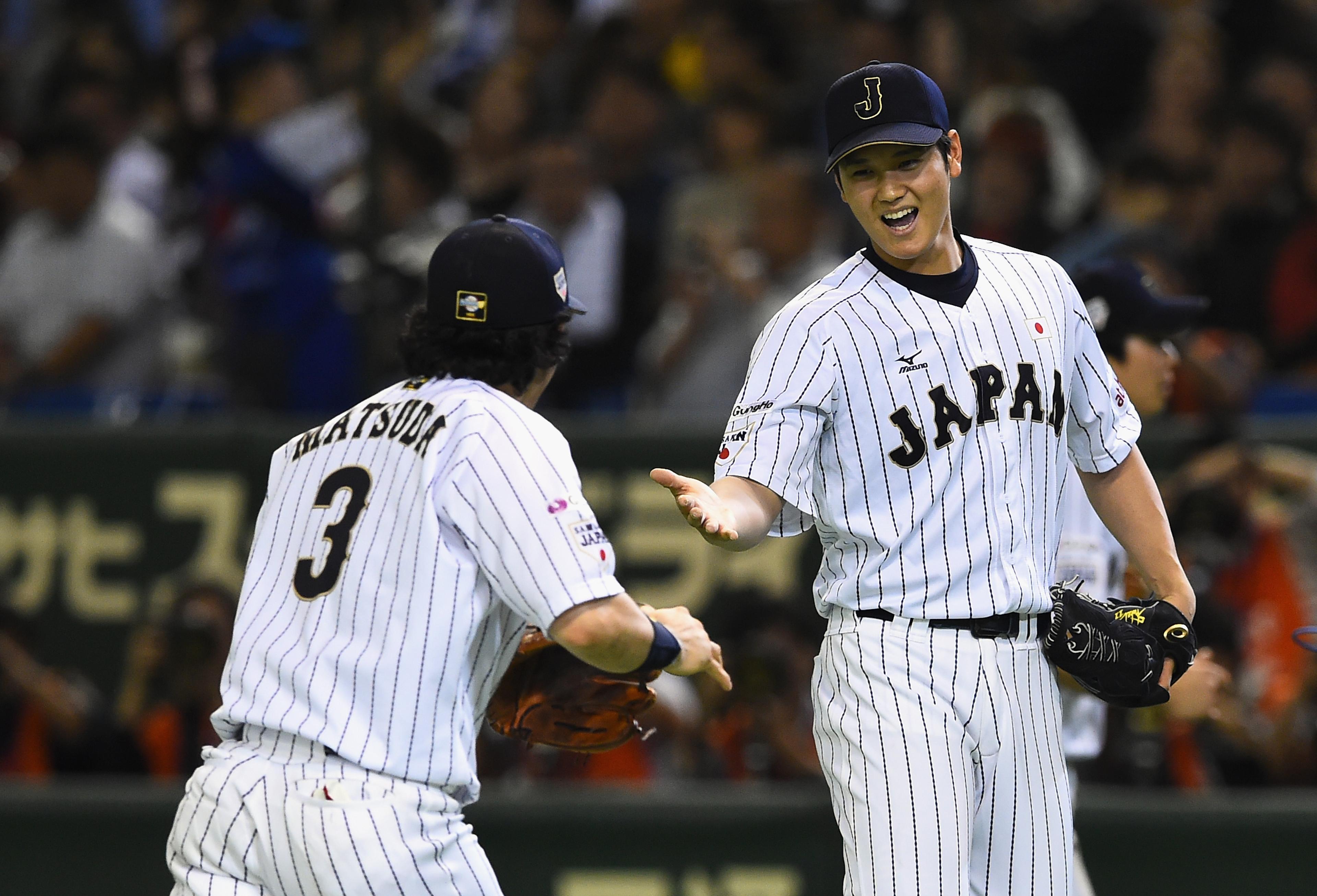
For years, baseball observers—and teams—have been looking forward to the winter following the 2018 season, whose free-agent class will include a bevy of superstars: Bryce Harper and Manny Machado, still in their mid-20s, and Clayton Kershaw, who could exercise an opt-out clause in his contract with the Dodgers.
But news on Tuesday night suggests that the upcoming winter could be just as dramatic, adding an element of mystery to the free-agent circus. Two-way Japanese star Shohei Ohtani, a 10-tool player, reportedly plans to come stateside to play in Major League Baseball next season.
This decision is a thrilling surprise. In coming to the majors this winter, the 23-year-old Ohtani is sacrificing hundreds of millions of dollars. The new CBA prevents teams from signing international players under 25 on a truly open market, instead consigning them to the now-hard-capped amateur bonus pools. Even though teams can trade bonus dollars, the maximum for which Ohtani can sign is just $10.1 million, after which point he will be subject to the same, stringent six-year timeline to become a true free agent.
On the open market, a player with Ohtani’s talents and potential could easily command nine figures, and perhaps approach a $200 million contract. Before the 2012 season, the Rangers paid upwards of $110 million, including the posting fee, to sign Yu Darvish, and two years later, the Yankees shelled out more than $150 million to sign Masahiro Tanaka. Both of those pitchers were older than Ohtani is now, and neither could swing a bat like the newest Japanese ace. A Sports Illustrated profile from April contended that the frugal youngster would be fine sacrificing money for the chance to challenge himself against the world’s best competition—he’s already won the Japan Series and the league’s MVP award—but it’s still a surprise that anyone would sacrifice that much money.
The thrills of Ohtani’s MLB recruitment are numerous. The competition to sign him will be fierce; more than half the teams in the majors scouted a recent pitching start, and with his potential signing bonus artificially dampened, theoretically every team could make a realistic offer. (It should be noted that not all teams are on equal footing. The Dodgers and Cubs, for instance, are capped at spending $300,000 on a single international allocation due to previous overspending, while the Yankees have quietly been hoarding extra bonus dollars.)
The second thrill is that on the mound, Ohtani is a prodigious talent, full stop. He’s the hardest-throwing pitcher in Nippon Professional Baseball history, with a 96 mile-per-hour fastball average, and he has befuddled Japanese hitters with a combination of that heater, darting sliders, and a mid-90s forkball since he was a teenager. Ohtani became a full-time starter for the Nippon Ham Fighters in 2014, and over the next three seasons, he posted the following combined line: 2.25 ERA, 1.01 WHIP, 30.4 strikeout rate, 8.2 percent walk rate, and 0.36 HR/9.
He hasn’t pitched much in 2017 after being hampered by an ankle injury that kept him out of the World Baseball Classic, then missing time after straining his thigh while running the bases in April. He’s thrown in just two games this year and tallied only 4.2 innings, during which time his command has been erratic (six walks) and he’s suffered from a lack of conditioning, leading to a 15.43 ERA. But there is little concern about his arm: Ohtani’s repertoire should translate fairly smoothly to the states, where hard-throwing, fastball-slider pitchers are among the majors’ best.
The third thrill, and the greatest of all, is what Ohtani could provide a roster beyond a quality start every fifth day. In 2016, he was worth 5.8 wins above replacement as a pitcher in NPB’s shorter season … and 4.6 as a hitter, essentially combining Noah Syndergaard and Paul Goldschmidt into one remarkable player.
Despite his injuries, he’s still crushed the ball in 2017, to the tune of a .346/.416/.574 slash line that’s in line with the .322/.416/.588 trio he posted in 2016. His home runs are titanic, and his left-handed power swing is as sweet, aesthetically, as any already in the majors.
There are more questions about whether Ohtani can hit MLB pitching consistently, though. The spotty track record of recent Japanese imports makes his NPB line less inspiring than it would appear, plus his strikeout rates have hovered around 25 percent the past two years and his line this year has benefited from a .450 BABIP that, according to Japanese sabermetric site Deltagraphs, is the second-highest in NPB (min. 150 plate appearances).
The question, then, is whether Ohtani will receive the chance to play both ways in the majors, either as an outfielder on days he’s not pitching or, if he signs with an AL club, as a designated hitter a few times a week. Because his offers will be compressed, it’s possible that a team could stand out in the race to sign Ohtani by promising him a two-way opportunity. Baseball fans can only hope as much. Teams have experimented with two-way projects recently, but all as last resorts to salvage a career, and certainly not with a player who has the potential to star on both sides of the ball.
Once he signs, the strategy alone will fascinate, and Ohtani will become the newest must-watch player in a sport now stocked with must-watch young talent. But even amid that crowd of Aaron Judges and Francisco Lindors and Chris Sales, Ohtani would stand out. He’d have to. He’s all those stars wrapped up into one, and come winter, 30 teams will have the chance to make him theirs.

